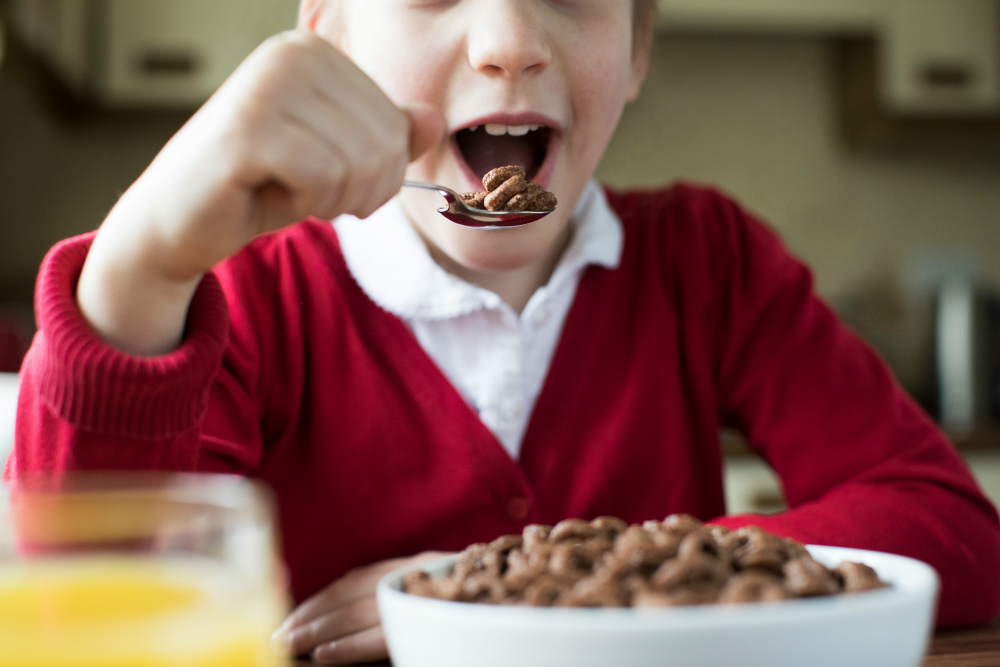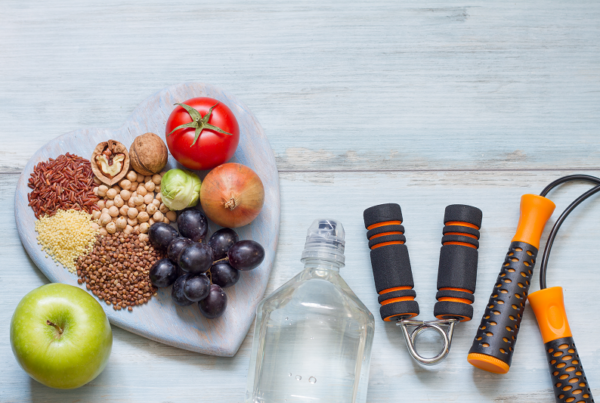
Do you know the stats around the weight of children who live in this country?
Unfortunately, it makes for depressing reading:
– Almost one third of Irish children are now overweight
– There has been a 10-fold increase in the rate of obesity among Irish boys (between 1975 and 2016) and a 9-fold increase among Irish girls
– Just 1 per cent of children living in Ireland were classified as obese in 1975, but that has risen to 9 per cent among girls and 10 per cent among boys in 2016.
– Rates of clinical and morbid obesity are nearly double in schools serving disadvantaged areas, highlighting the major health inequalities in our country today.
– Obese children are more likely to become obese adults…meaning the future will be bleak, unless we tackle this soon, both as parents, and at a societal level.
Part of the problem is that parents actually find it difficult to recognise that their child’s weight is not healthy.
What are the Risks?
An overweight or obese child is likely to suffer from problems with joint pain; breathing difficulties; psychological and social issues, such as bullying or not wanting to join sports. The long-term effects are frightening and include; cancer, heart disease, type II diabetes and severe mental health problems (such as self-harm and suicidal intent).
And it’s costing us in more ways than one. New Safefood funded research has estimated the total lifetime cost to be €7.2 billion euros (€4.6 billion in the Republic of Ireland; £2.1 billion in Northern Ireland) – so the toll that we will pay for our overweight and obese children is huge.
Why are our Children Overweight?
Portion Sizes: One study published in a scientific journal last June showed that larger portion sizes were directly linked to overweight children and that feeding kids larger meal sizes at 21 months was associated with their gaining weight between the ages of two and five.
In fact, for every additional ten calories children consumed at meals, their odds of being overweight grew by six per cent. This is backed up by a new report by the Infant and Toddler Forum (ITF) that found one in ten parents give pre-school children meals the size of adult portions and a third don’t see anything wrong with young children eating a whole bag of crisps, even though this is twice the recommended amount.
Declining activity levels: The recommendation is that our children should be physically active for one hour each day. Sadly, the reality falls far behind this. In fact, four out of five children (ROI) and three out of four children (NI) DO NOT meeting the guidelines. Also, in 1981 it was reported that approximately 50 per cent of children walked to school, whereas that figure had dropped to just 25 per cent by 2014. We need to address this immediately. We also need to be aware that increased phone ownership (and gaming) among children has been shown to negatively impact their activity levels. It is our responsibility to teach (or demand) self-discipline around phone/screen use for the health of our children.
And we need to role-model that for them (put away that phone when engaging with our children and really listen to them and make eye contact with them).
Some of the reasons that parents give for this decline in activity levels is lack of access to indoor facilities (important, due to our sometimes unfavourable climate), safety concerns and lack of habit, perhaps because parents themselves are overweight or inactive, or where both parents work and do not feel they have the time to dedicate to bringing their children to extra-curricular activities.
Soaring Sugar Content of Food: There has been a marked increase in children’s consumption of sugary drinks in the past number of decades, alongside the consumption of ‘hidden’ sugars which some manufacturers have pumped into foodstuffs that appear healthy, which is deceiving parents trying to do their best.
In fact, it is believed that one-fifth of the energy intake from a child’s diet typically comes from sugary drinks, biscuits, confectionary, chocolate and cake. But it’s not just biscuits and chocolates that are the problem, but also jars of pasta sauces and tins of soups, as well as many popular yoghurts, often marketed at children. Even some bread can contain sugar – surprisingly, many supermarket sandwiches have added sugar to sweeten the bitter taste and research has shown that in some brands, a slice of white or wholemeal bread can contain up to half a teaspoon of sugar! The recently introduced sugar tax (applicable to sugary drinks) will go some way to hopefully reducing childhood sugar consumption, but it’s not enough. Read more on the details here.
The hidden sugars present in many foods still means that parents need to educate themselves as knowledge is power, particularly in this case. Start by learning to read labels, particularly looking for sugar content. Check out our How To Read Food Labels guide here.
What Can We Do, as Parents?
The main advice is to start small with changes – don’t try to overhaul everything overnight as your child is more likely to resist. Small but definite steps to change over to healthier choices will benefit all of the family and, within six to twelve months, parents should hopefully see a significant improvement in habits, and therefore their child’s weight (if problematic).
Check out our 10 Top Weight Loss Tips For Overweight Children:
1) Eat together as a family: role model for your child and remember that the golden rule is to KEEP OFFERING healthy food and vegetables.
Research shows that a child may need to be introduced to a new food 14 times before they start to like it – and don’t give up even then! Take a break and start again a week or two later.
2) Serve food on smaller plates so meals look larger: a sandwich on a dinner plate looks lost; on a starter plate, it looks generous. Many children leave plenty of food on their plate, but the over-eaters will tend to clean their plate so make sure their serving size is smaller than yours (about half or less for a young child; and about three-quarters for an older child).
3) Ration ‘treat’ foods: avoid letting children take an entire bag of crisps or a container of ice cream to snack on. Everyone will be far less likely to overdo it if you serve individual portions in the kitchen – and remind them to eat slowly!
4) Dish out meals at the counter: avoid bringing the whole pot to the table. Not keeping the food at arm’s length can make your family think twice about reaching for seconds. If they do want seconds, offer more veggies or salads.
5) Aim for three healthy meals and 1-2 healthy snacks throughout the day: skipping a meal often leads to overeating at the next one as blood sugars may rollercoaster up and down (particularly when snacks are sugary).
6) Add more salads and fruit to your family’s diet: especially at the start of a meal, which can help control hunger and give a sense of fullness while controlling calorie intake (both are full of fibre).
7) Be aware of restaurant portions sizes: they may be two, three, or more times the recommended serving size. Try sharing meals, ordering a starter as a main dish, ordering kids’ meals or half-portions, or packing up half to take home before you begin to eat (ask the waiter to take away half for a ‘doggy bag’ you can bring home).
8) Don’t be tempted to go for the giant value meal: just because they’re just a few cents more than the regular size doesn’t mean they represent ‘value’ (they certainly aren’t valuable to your health after all). The ‘deal’ is not presenting value when it triples your family’s calories and contributes to their weight problem.
9) Educate yourself on what a correct portion looks like: a great opportunity to teach the correct portion is when your child is a toddler. For a guide on what a portion should look like for toddlers, see here. But please don’t despair if your child is older – it IS possible to change habits and see a reduction in body weight over the coming months. Consult your Motivation Plan booklet to get a better idea of what a portion looks like on our plan (and see below for more information).
10) Start the day well: there’s a great saying that goes ‘If you win the first hour of the day, you’ve won the day’. In other words, the habits and rituals that you do in the first hour can set you up for a great day, both in terms of your health and mentally. The same applies to our children – limit any screens first thing in the morning, encourage them to start the day with a large glass of water and then a healthy breakfast full of fibre and ideally with some protein some mornings (such as a poached egg or greek yoghurt with fruit). Research consistently shows that those who eat breakfast every day tend to manage their weight better (never mind the impact it has on concentration in school for our children).
ACTIVITY: Tips for Parents
The top 10 tips for overweight children can be further enhanced if parents engage in 4 key activities:
1. Replace screen time with active games (take a digital detox – good for both you AND the children! Ban screens in the morning and last thing at night – get out into the garden or go for a walk instead).
2. Build activity into everyday routines by walking or cycling to and from work/school.
3. Get involved and get active yourself!
4. Children don’t have to do it all at once. They can build it up over the day – three bouts of 20 minutes is just as good as one hour of continuous exercise.
What Does a Healthy Diet for a Child Look Like?
One with protein in most meals and snacks. In addition to being filling, protein stimulates the release of a hormone that helps the body release stored fat to use for energy, says Dr. Ludwig.
A diet that contains healthy fats. Fat isn’t the enemy we once thought it was. Healthy fats like unsaturated oils, nut butters, and avocado slow down digestion, and they make fruit, veggies, and whole grains even more filling. Fat is actually vital to health: It’s needed to make cell membranes throughout the body — and the types of fat your child eats affect his immune system, nervous system, and overall health.
One with foods that your grandparents would recognise. Fake foods (think chicken nuggets, fruit roll-ups, cheese puffs, and other highly processed products bearing no resemblance to anything found in nature) are rarely healthy choices, says Dr. Ludwig. When you choose grains, look for the least-processed options, such as stone-ground wheat bread, steel-cut oatmeal, and brown rice.
A low sugar diet, that affects behaviour too. When your child’s blood sugar drops soon after a high-glycemic meal, she also has a surge in the stress hormone adrenaline. That can make her cranky, irritable, or unable to focus in class. A satisfying, filling way of eating. No parent wants to put their child on a diet. But if the whole family focuses on foods that nourish and fill their child (one that includes regular protein AND fibre from vegetables and fruit), everyone will benefit and the child who has a weight problem won’t feel singled out. By helping him or her focus on the quality of the food he’s eating rather than the quantity, he/she can eat until he feels satisfied and still lose weight.
Consider the Quality of their Carbs
It’s true that children need carbohydrates in their diet due to their energy and growth demands. However, it’s the quality of the carbs that counts. If your child had a bagel for breakfast this morning, it wasn’t much more nutritious than eating a bowl of sugar, says Parents advisor David Ludwig, MD, PhD, associate professor of pediatrics at Harvard Medical School and director of the Optimal Weight for Life Program at Boston Children’s Hospital. That’s because most starchy carbohydrates, like bread, white rice, and potatoes, dissolve into glucose soon after you swallow them. Starting the day with eggs or another source of protein instead will not only help your child feel fuller, but it will help him/her lose weight.
The glycemic load is key. This is the measure of how quickly a food containing carbohydrates turns into glucose. Studies have shown that when a kid eats a high-glycemic meal, his blood-glucose surges and then plummets — leaving him even hungrier. A low-glycemic meal takes longer to digest so a child’s blood sugar stays steady, and he’ll feel full longer. In general, low-glycemic carbs have more fibre and are less processed.
Choose lots of veggies and fruits (but chose the right ones). The more veggies, the better. However, parsnips/carrots and potatoes have a high glycemic index, and certain tropical fruits, such as bananas and pineapple, are more likely to contribute to weight gain than apples, grapes, oranges, cantaloupe, kiwi, or berries. Also, encourage your child to eat a small amount of protein with their fruit, such as a Babybel cheese or a slice of ham or turkey (to slow down the body’s response to the sugar in the fruit).









